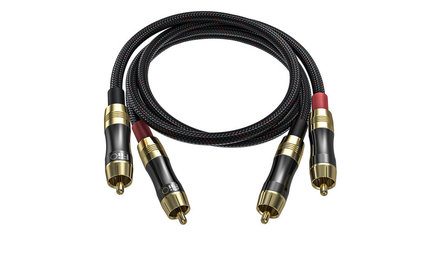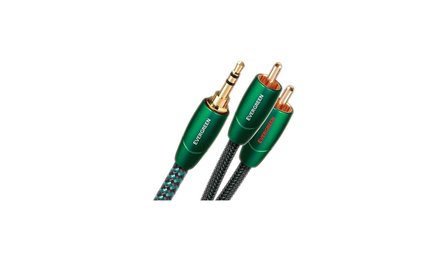

- 6500+ reviews score 9.4 average
- Free shipments over 50 euro in The Netherlands and Belgium
- Shipment in the EU
AudioQuest Greyhound
SOLID 0.5% SILVER CONDUCTORS: Solid conductors eliminate strand-interaction distortion and reduce jitter. Solid silver-plated conductors are excellent for very high-frequency applications. These signals, being such a high frequency, travel almost exclusively on the surface of the conductor. As the surface is made of high-purity silver, the performance is very close to that of a solid silver cable, but priced much closer to solid copper cable. This is an incredibly cost effective way of manufacturing very high-quality subwoofer cables.
FOAMED-POLYETHYLENE INSULATION: Any solid material adjacent to a conductor is actually part of an imperfect circuit. Wire insulation and circuit board materials all absorb energy (loss). Some of this energy is stored and then released as distortion. Greyhound uses air-filled Foamed-Polyethylene Insulation on both conductors because air absorbs next to no energy and Polyethylene is low-loss and has a benign distortion profile. Thanks to all the air in Foamed-PE, it causes much less of the out-of-focus effect common to other materials.
METAL-LAYER NOISE-DISSIPATION SYSTEM (NDS): 100% shield coverage is easy. Preventing captured RF Interference from modulating the equipment’s ground reference requires AQ’s Noise-Dissipation System. Noise-Dissipation System prevents a significant amount of RFI from reaching the equipment’s ground plane.
HYPERLITZ COAX GEOMETRY: In Greyhound, a perfect circle of eight negative conductors spiral around a single larger positive conductor, creating a cable with a large cross-sectional area, minimizing skin effect, and providing low resistance.
COLD-WELDED GOLD-PLATED PLUGS: This plug design allows for a connection devoid of solder, which is a common source of distortion. Because the ground shells are stamped instead of machined, the metal can be chosen for low distortion instead of machinability.
GROUNDING: Sometimes there is a hum problem unless the subwoofer and AV receiver (or surround-sound processor) are attached to each other using a separate wire. If your system has a hum problem, try attaching the little spade-lug tails to the metal chassis of the subwoofer amplifier and to the chassis of the sending component. Usually, this extra wire will not be needed.
- Homepage
- Specials
- Streaming Audio
- Headphones
- Sound
- Vision
- Network
- Storage
- Smart Home
- Cables & Accessories
- Top 10
My account
New customer?
- Create an account to check your orders
- Make your shop experience better and faster
- Save your cart and save products to your wishlist




